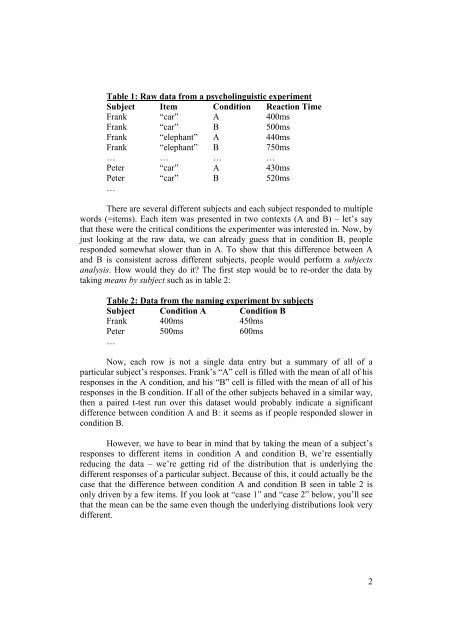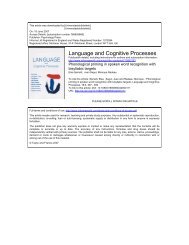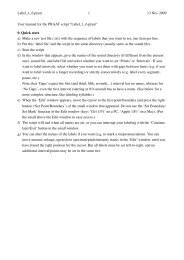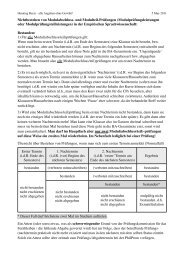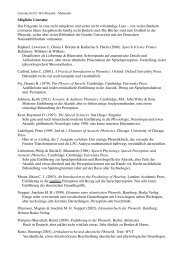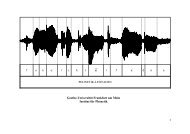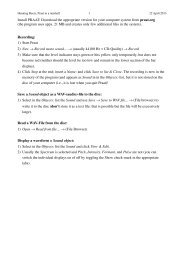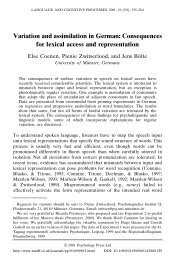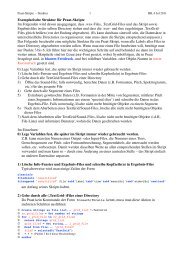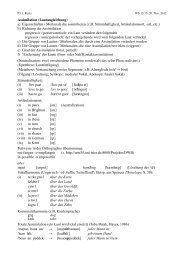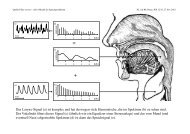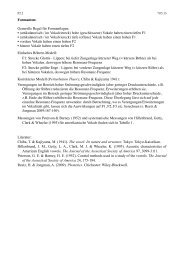A very basic tutorial for performing linear mixed
A very basic tutorial for performing linear mixed
A very basic tutorial for performing linear mixed
Create successful ePaper yourself
Turn your PDF publications into a flip-book with our unique Google optimized e-Paper software.
Table 1: Raw data from a psycholinguistic experiment<br />
Subject Item Condition Reaction Time<br />
Frank “car” A 400ms<br />
Frank “car” B 500ms<br />
Frank “elephant” A 440ms<br />
Frank “elephant” B 750ms<br />
… … … …<br />
Peter “car” A 430ms<br />
Peter “car” B 520ms<br />
…<br />
There are several different subjects and each subject responded to multiple<br />
words (=items). Each item was presented in two contexts (A and B) – let’s say<br />
that these were the critical conditions the experimenter was interested in. Now, by<br />
just looking at the raw data, we can already guess that in condition B, people<br />
responded somewhat slower than in A. To show that this difference between A<br />
and B is consistent across different subjects, people would per<strong>for</strong>m a subjects<br />
analysis. How would they do it? The first step would be to re-order the data by<br />
taking means by subject such as in table 2:<br />
Table 2: Data from the naming experiment by subjects<br />
Subject Condition A Condition B<br />
Frank 400ms 450ms<br />
Peter 500ms 600ms<br />
…<br />
Now, each row is not a single data entry but a summary of all of a<br />
particular subject’s responses. Frank’s “A” cell is filled with the mean of all of his<br />
responses in the A condition, and his “B” cell is filled with the mean of all of his<br />
responses in the B condition. If all of the other subjects behaved in a similar way,<br />
then a paired t-test run over this dataset would probably indicate a significant<br />
difference between condition A and B: it seems as if people responded slower in<br />
condition B.<br />
However, we have to bear in mind that by taking the mean of a subject’s<br />
responses to different items in condition A and condition B, we’re essentially<br />
reducing the data – we’re getting rid of the distribution that is underlying the<br />
different responses of a particular subject. Because of this, it could actually be the<br />
case that the difference between condition A and condition B seen in table 2 is<br />
only driven by a few items. If you look at “case 1” and “case 2” below, you’ll see<br />
that the mean can be the same even though the underlying distributions look <strong>very</strong><br />
different.<br />
2


